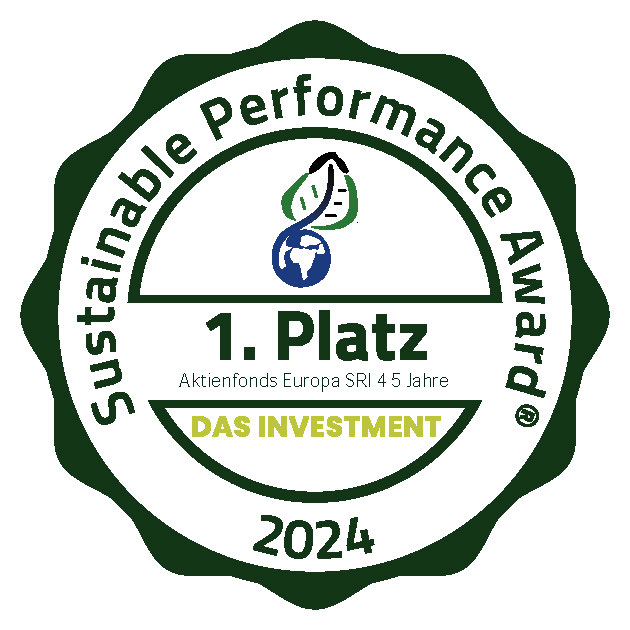Carnot Talks

The Relevance of Investments in Energy and Resource Efficiency

The Relevance of Investments in Energy and Resource Efficiency
Andres Gujan explains the significant impact of these investments:
“The capital market is essential. Massive investments in improving energy and resource efficiency are needed to steer the world toward a CO₂-neutral circular economy. On a corporate level, these investments are crucial for maintaining competitiveness and enhancing sustainability. At Carnot Capital, we have the expertise to assess the impact of individual products and technologies.”
1. Energy Savings
Energy savings are a key aspect when evaluating the impact of energy efficiency measures. The amount of energy saved is typically measured in kilowatt-hours (kWh). Another important indicator is the percentage reduction in energy consumption compared to industry standards. These figures provide insight into the effectiveness of the measures.
2. Cost Savings
Financial savings in energy consumption are a major incentive for energy efficiency measures. The return on investment (ROI) is a key indicator here, measuring the return as the ratio of energy cost savings to the investment cost of the measure. The ROI indicates how quickly the investment pays off.
3. CO₂ Emissions
Reducing CO₂ emissions is another critical driver of energy efficiency measures. CO₂ savings are essential due to legal requirements, customer expectations, or corporate sustainability strategies. The carbon footprint of products—especially electric vehicles—is gaining importance. The footprint reflects the total greenhouse gas emissions generated throughout a product’s lifecycle. Reducing this footprint is crucial for advancing climate change mitigation efforts.
4. Resource Efficiency
Resource efficiency focuses on the sustainable use of natural resources such as water, energy, agricultural land, food, or metals. The goal is to reduce consumption and minimize waste. This is essential to ensure long-term resource availability and prevent severe environmental damage to natural ecosystems. Key indicators include the amount of materials saved and waste reduction through more efficient use and recycling of materials.
5. Productivity Improvements
Productivity improvements are a significant benefit of energy efficiency measures. Metrics such as output per unit of energy used and production process optimizations—leading to lower operating costs and increased efficiency—are essential. These enhancements help boost competitiveness and streamline business operations.
6. Social and Economic Indicators
Investments in energy and resource efficiency also bring social and economic benefits. They create jobs and improve working conditions through sustainable transformations. Key indicators include the number of jobs created or maintained and improvements in working conditions and public health due to reduced pollution and safer technologies. These measures contribute to social and economic development while enhancing quality of life.
7. Long-Term Sustainability
Long-term sustainability is a core objective of energy and resource efficiency initiatives. Detailed sustainability reports that document the long-term impact of investments on the environment, society, and the economy are essential tools. Compliance with sustainability standards and obtaining certifications are further indicators of long-term sustainability.
8. Monitoring and Evaluation
Continuous monitoring and evaluation are crucial for the success of energy efficiency measures. The use of energy management systems and other technologies for real-time tracking and analysis of energy and resource use enables ongoing assessment and optimization. Benchmarking—comparing efficiency measures with industry standards or best practices—helps identify progress and potential improvements.
“By combining these methods and indicators, companies and investors can comprehensively evaluate and continuously improve the impact of their investments in energy and resource efficiency. These measures not only contribute to cost and emission reductions but also promote sustainable and future-oriented development.”
Andres Gujan, Founder of Carnot Capital & Portfolio Manager
Andres Gujan, March 3, 2025

Automotive Industry in Transition: Innovations Driving the Future of Mobility

Automotive Industry in Transition: Innovations Driving the Future of Mobility
Innvations in the Automotive Industry
The automotive industry is currently undergoing major developments in numerous areas:
- ‘Connected Cars’: The vehicle as a digital platform
- Autonomous Driving: First robotaxis, then personal vehicles
- Electromobility: On the rise, especially in China
- Alternative Fuels: A complement to e-mobility
Mobility is fundamentally shifting toward connected and autonomous vehicles. These changes are not only revolutionizing transportation but also influencing urban design, the working environment, and quality of life.
Digitalization and Sensor Technology as Key Success Factors
At the core of innovation lies the combination of sensor technology and computing power (including AI). Data-driven services and connected mobility are becoming the norm. Technology providers that successfully integrate sensors and digital technologies hold a particularly strong market position.
Electromobility and, above all, the increasing autonomy of vehicles free up space for passengers to pursue various activities—entertainment, work, comfort, relaxation… This, in turn, drives additional demand for sensors and chips. Expected growth rates by 2030 vary by application, reaching over 22% in some cases.
Implications for Carnot Capital
Despite these developments and attractive valuations, we are maintaining a relatively low allocation in automotive suppliers. Our semiconductor and sensor technology positions in Melexis, LEM, Infineon, and Xfab account for around 10% of our portfolio. In addition, Ems-Chemie contributes as a manufacturer of high-performance polymers that make vehicles lighter and safer. With Sandvik, we also participate in the electrification of mining: electric loaders and transporters reduce the carbon footprint of metals while increasing productivity.
We will increase our automotive allocation once we gain confidence in rising car sales and see renewed momentum in electromobility, particularly in Western markets.
Rolf Helbling / Andres Gujan, February 5, 2025

The Ocean as a Source of Electricity Storage?

The Ocean as a Source of Electricity Storage?
Lithium is currently the most commonly used metal for batteries because it enables a relatively high energy density. However, sodium batteries are increasingly becoming an attractive alternative: Sodium is available in unlimited quantities as a salt of the oceans (sodium chloride NaCl) and can be extracted without causing environmental damage. Sodium batteries are also characterised by a high level of safety, as they are less flammable. However, sodium batteries also have disadvantages due to their lower energy density. They are more suitable for stationary applications.
Resourceful Researchers in a Race
Market forecasts from Bloomberg and McKinsey predict that the battery market will grow several hundred billion times over. The brightest minds are working with huge R&D budgets to eliminate the disadvantages of sodium batteries – low voltage and corrosion of the cathode (service life). In fact, great successes have now been reported. The first cars with sodium batteries are already on the road in China. The industry leader BYD is investing more than USD 1 billion in a large production plant. The other industry leader, CATL, wants to reduce the cost per kilowatt hour to $57 with a new generation of sodium batteries. A car battery would then cost less than $5,000. Research is going in various directions, and experiments are also being carried out with other inexpensive metals (magnesium, aluminium, zinc). There are great expectations for solid-state batteries, for example, which boast greater energy density and improved safety. The first factories are already under construction and should be supplying safe, high-performance batteries as early as next year.
Significance for Carnot
Battery prices have been falling slightly for years. However, with the emergence of new materials and technologies, a significant price reduction is now imminent. Due to the high capital intensity and major technology risks, battery production remains unattractive for us as investors. Nevertheless, the significant reduction in battery prices is relevant for us, as it makes the combination of renewable energy and storage cheaper. This triggers further investments in the conversion of the energy supply, where our portfolio companies are involved – from engineering, technology and installation through to system control and optimisation (AFRY, Concentric, ABB, etc.).
Did You Know?
700,000 tonnes of cheese are stored in American caverns. That is more than three times Switzerland’s annual production.

5 Reasons for Impact Investing

5 Reasons for Impact Investing
Impact investing, i.e. sustainable and responsible investing, is a need for more and more investors. Rolf Helbling explains the five most important reasons why impact investing is extremely important and financially very worthwhile:
1. Double Bottom Line:
Impact investing aims to achieve positive social and environmental effects in addition to financial returns. Investments support projects or companies in areas such as energy saving, renewable energies, resource efficiency or healthcare.
2. Long-Term Financial Returns:
“Companies that pursue sustainable and responsible practices are often better positioned for long-term success. The investment focus on companies that essentially promote a more efficient use of resources forms the basis for an attractive return. Studies show that impact investments offer competitive financial returns by capitalising on long-term opportunities and mitigating risks arising from unsustainable business practices.
3. Risk Minimisation:
By integrating environmental, social and governance (ESG) factors into investment decisions, potential risks can be better identified and minimised. Companies that operate sustainably are often less susceptible to regulatory changes and scandals.
4. Fulfilment of Personal Values:
Many investors want to invest their capital in line with their personal values. Impact investing enables investors to make a positive contribution to society and the environment with their capital and at the same time fulfil their own ethical expectations.
5. Market and Innovation Potential:
Impact plants support innovative companies and technologies that develop solutions for today’s biggest challenges. This can lead to the creation of new markets and business opportunities that drive long-term growth and positive change in the area of energy and resource efficiency.
“Impact investing gives investors the opportunity to play an important role in tackling global challenges while generating attractive financial returns.”
Rolf Helbling, Founder Carnot Capital & Portfolio Manager

Nuclear Power – A New Boom or the Beginning of the End?

Nuclear Power – A New Boom or the Beginning of the End?
This was the title of a discussion programme on SRF television. The answer depends very much on your point of view. The expansion of nuclear power slowed down after the Chernobyl disaster (1986) and practically came to a standstill after Fukushima (2011), with Asia (China, India) being the exception. Since Europe has renounced Russian gas and wants to take the reduction of CO2 emissions seriously, nuclear energy is enjoying more support in Europe again.
The biggest advocates of nuclear power come from the IT industry: for Jensen Huang, CEO of Nvidia, nuclear power is virtually the natural energy source for operating the power-hungry data centres and Microsoft has already concluded a long-term supply contract with the damaged Three Mile Island nuclear power plant.
Some Key Aspects
In addition to high reliability and climate neutrality, nuclear power’s apologists cite the greater safety and lower radioactive waste of the new reactor designs. In addition, nuclear power plants reduce dependence on problematic exporters of fossil fuels. Essentially, however, proponents and opponents have been putting forward the same arguments for decades. Public opinion remains divided and varies from country to country.
The technology is indeed developing. However, the first SMRs – Small Modular Reactors – are unlikely to go into operation before 2030. The economic viability of new construction projects remains a major challenge, as the new plants in the UK and Finland have shown. While state support for solar and wind projects is declining, this is not (yet?) the case for new nuclear power plants.
Significance for Carnot Capital
The future of nuclear technology remains vague due to high costs and safety concerns, which is why we are not directly involved. In addition, sustainability is controversial. Over the last 20 years, the production of nuclear power has remained more or less stable globally. Due to the high growth in renewable and fossil electricity production, the proportion has halved to around 10%. In terms of value, investments in renewable energies are currently around ten times higher. We are therefore looking for investment opportunities in the management of electricity grids, where requirements have risen sharply. Schneider Electric, ABB and BKW fall into this category.
Did You Know?
The first British coal-fired power station was started up by Thomas Edison in 1882, and the last one went out of operation at the end of September.

High Growth in Data Centers

High Growth in Data Centers
The global data centre market continues to grow unabated. A significant proportion of this growth comes from ‘hyperscale data centres’, which are being built by large technology groups such as Microsoft, Google and Amazon. The increasing use of artificial intelligence and machine learning is significantly changing the requirements for data centres. These technologies require more computing power and higher rack densities, which necessitates new designs and increases location requirements. In addition, the demand for “colocation”, i.e. capacity close to users, is increasing to ensure faster loading times.
Sustainability and Energy Efficiency
The sustainability and energy consumption of data centres is an increasingly important aspect, as energy costs and environmental impact are rising steeply. There is a need to improve energy efficiency, and there are several approaches to this:
• Cooling is the most important consumption factor. Free cooling or liquid cooling are common efficiency measures.
• Eliminating losses from sub-optimal power distribution significantly reduces energy consumption.
• Energy for the infrastructure increases energy consumption – building automation helps to reduce this consumption.
• Many data centre operators rely on renewable energies to reduce their carbon footprint.
In order to build “green data centres” in the future, a holistic approach is required. This enables optimised energy efficiency and therefore both economic and ecological benefits.
Data Centers in the Carnot Capital Portfolio
Schneider Electric has developed a platform that enables the analysis, monitoring and automation of data centres. Data centres are an important part of the core business, accounting for almost 20% of sales. At ABB and Hubbell, this share is around 10% and also makes a substantial contribution to sales growth. Instalco, a Scandinavian installation company, and Energiekontor, which develops wind and solar projects for the operation of data centres, are also benefiting. Finally, Carel, a new portfolio item, develops advanced cooling systems tailored to the requirements of data centres.



